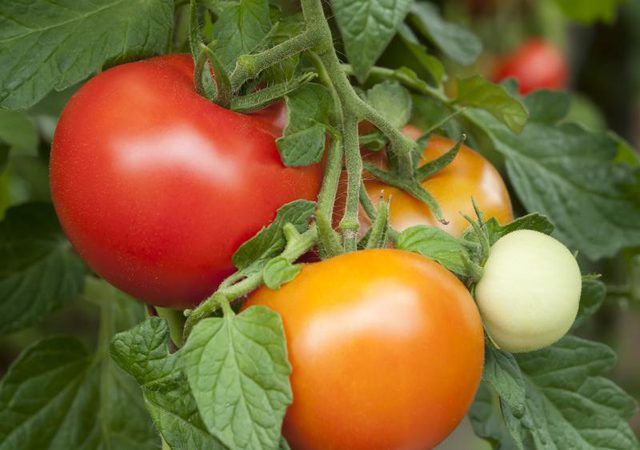Bulbs
Flower Basics
Flower Beds & Specialty Gardens
Flower Garden
Garden Furniture
Garden Gnomes
Garden Seeds
Garden Sheds
Garden Statues
Garden Tools & Supplies
Gardening Basics
Green & Organic
Groundcovers & Vines
Growing Annuals
Growing Basil
Growing Beans
Growing Berries
Growing Blueberries
Growing Cactus
Growing Corn
Growing Cotton
Growing Edibles
Growing Flowers
Growing Garlic
Growing Grapes
Growing Grass
Growing Herbs
Growing Jasmine
Growing Mint
Growing Mushrooms
Orchids
Growing Peanuts
Growing Perennials
Growing Plants
Growing Rosemary
Growing Roses
Growing Strawberries
Growing Sunflowers
Growing Thyme
Growing Tomatoes
Growing Tulips
Growing Vegetables
Herb Basics
Herb Garden
Indoor Growing
Landscaping Basics
Landscaping Patios
Landscaping Plants
Landscaping Shrubs
Landscaping Trees
Landscaping Walks & Pathways
Lawn Basics
Lawn Maintenance
Lawn Mowers
Lawn Ornaments
Lawn Planting
Lawn Tools
Outdoor Growing
Overall Landscape Planning
Pests, Weeds & Problems
Plant Basics
Rock Garden
Rose Garden
Shrubs
Soil
Specialty Gardens
Trees
Vegetable Garden
Yard Maintenance
Plant Food for Tomatoes
Plant Food for Tomatoes. Tomatoes (Lycopersicon esculentum) thrive throughout U.S. Department of Agriculture plant hardiness zones 2 through 10. Usually raised as annuals, the vines grow quickly, with some varieties producing fruit within a couple months after planting. To fuel this rapid plant growth and ensure the biggest, juiciest tomatoes, feed...

Tomatoes (Lycopersicon esculentum) thrive throughout U.S. Department of Agriculture plant hardiness zones 2 through 10. Usually raised as annuals, the vines grow quickly, with some varieties producing fruit within a couple months after planting. To fuel this rapid plant growth and ensure the biggest, juiciest tomatoes, feed your plants with the right variety of fertilizer.
Compost as the Appetizer
Compost provides macronutrients like nitrogen. It also enhances the soil structure, aeration and drainage -- all key to optimal tomato plant health. Before planting your tomatoes in an outdoor garden bed, mix in a couple inches of compost or similar organic matter into the top 6 to 8 inches of soil. If you're instead growing your tomatoes in containers, choose a potting mix that includes organic matter. The ideal ratio in a potting mix is 1 part compost, 1 part sterilized soil and 1 part perlite or vermiculite.
Balanced Fertilizer as the Main Dish
After amending your garden bed with compost, mix in a 5-10-10 fertilizer or any similar moderate-nitrogen fertilizer to set the basic nutritional foundation for your future vegetables. Use at a rate of 1 1/2 pounds of fertilizer for every 50 square feet of gardening space a couple of weeks before planting the tomatoes. For container gardening, check the size of your pot. You'll need approximately 1/2 tablespoon of any balanced fertilizer, such as a 14-14-14 or 10-10-10 product, for every gallon of potting soil. For example, if you have a 2-gallon vegetable pot, you'll need 1 tablespoon of 10-10-10 fertilizer. Mix the fertilizer into the potting mix before planting the tomatoes.
A Second Helping
Your tomato plants, whether they're grown in the ground or in pots, need additional fertilization to encourage lush foliage and the biggest fruit harvest. When the plants produce their first set of fruit, give each plant a second serving of balanced fertilizer. Use 2 tablespoons of a balanced fertilizer, such as a 10-10-10 product, per plant. Sprinkle it around the base of the plant, being careful not to allow the fertilizer to actually touch the plant. Water immediately to dissolve the fertilizer and carry it to the tomato plant's roots. Repeat every four weeks until your tomatoes have stopped producing.
Mulch as the Dessert
Mulch serves several purposes. It helps conserve soil moisture, adds important nutrients to the underlying soil as it decomposes and helps block the invasion of weeds that would compete with your tomato plants for nutrients in the soil. Apply a couple inches of mulch to your garden bed or container. Example mulch material includes shredded leaves and wood chips.
Minerals as a Snack
Tomatoes are sensitive to a few mineral deficiencies. If the tip of your developing tomato fruit starts to rot, your plant may be suffering from a calcium deficiency. Research has yet to identify a specific remedy for calcium deficiencies that work in all situations. But it serves as a reminder to never skip your regularly scheduled fertilization. Sufficient application of a balanced fertilizer should protect against calcium problems. Meanwhile, slow tomato fruit growth and yellowing foliage may mean a magnesium deficiency. Sprinkle a tablespoon of Epsom salt granules around each plant affected plant and water it to dissolve the salt. Epsom salt is a naturally rich source of magnesium and may result in lusher, healthier tomato plants.